Temporary & Portable Solar Lighting
How to Choose the Best Exterior Solar Lights for Your Home and Garden
Choosing the best exterior solar lights for your home and garden can transform your outdoor space, enhancing both its beauty and functionality. With the growing popularity of solar-powered lighting solutions, an array of options is available to suit various preferences and needs. From path lights that illuminate walkways to decorative fixtures that add charm to your garden, understanding the types of exterior solar lights and their features is essential. Factors such as brightness, design, battery life, and ease of installation should be considered when making your selection. Additionally, you'll want to ensure that the chosen lights complement your home’s architecture and landscape while providing adequate illumination. This guide aims to equip you with the knowledge and tips necessary to navigate the diverse marketplace of exterior solar lights, ensuring you make an informed decision that enhances your outdoor living experience.
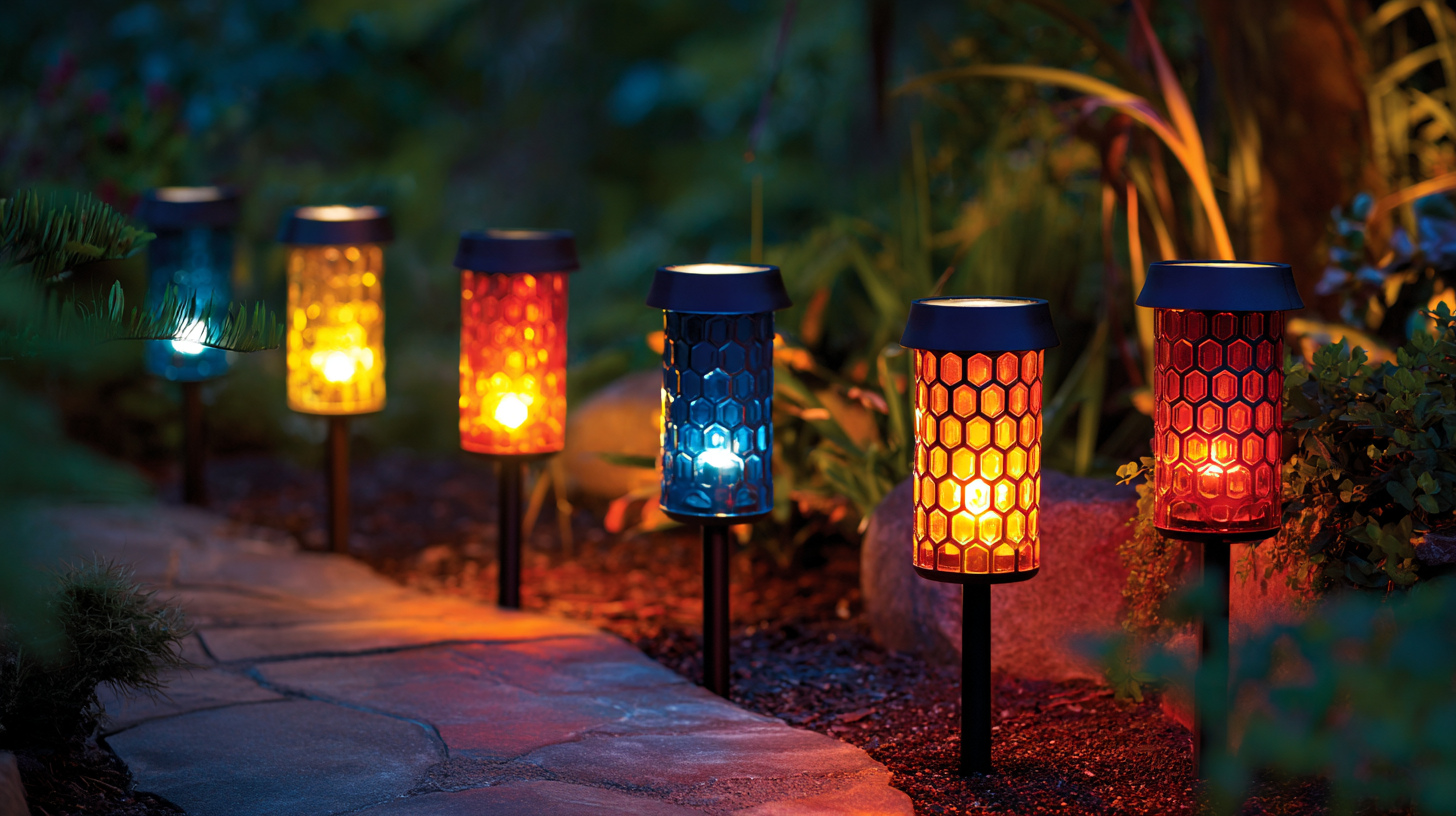
Factors to Consider When Selecting Exterior Solar Lights
When selecting exterior solar lights for your home and garden, several key factors come into play that can significantly impact both functionality and aesthetics. First, brightness is a crucial consideration. According to a report by the Solar Energy Industries Association (SEIA), solar lights can have varying lumen outputs that range from 30 to over 130 lumens, depending on the model and design. For larger outdoor spaces, lights with a higher lumen output are recommended to ensure adequate illumination, while smaller areas may require less brightness.
Another important factor is battery capacity and charging time. A study highlighted by the National Renewable Energy Laboratory (NREL) indicates that high-capacity lithium-ion batteries can significantly enhance the performance of solar lights, allowing them to operate longer during nights with less sunlight. Moreover, selecting fixtures with a solar panel that can fully charge within 6 to 8 hours of direct sunlight can help maximize efficiency. Additionally, consider the durability of the materials, particularly in regions with harsh weather conditions. Look for lights made from corrosion-resistant materials and with a high IP rating to ensure they withstand various environmental elements.
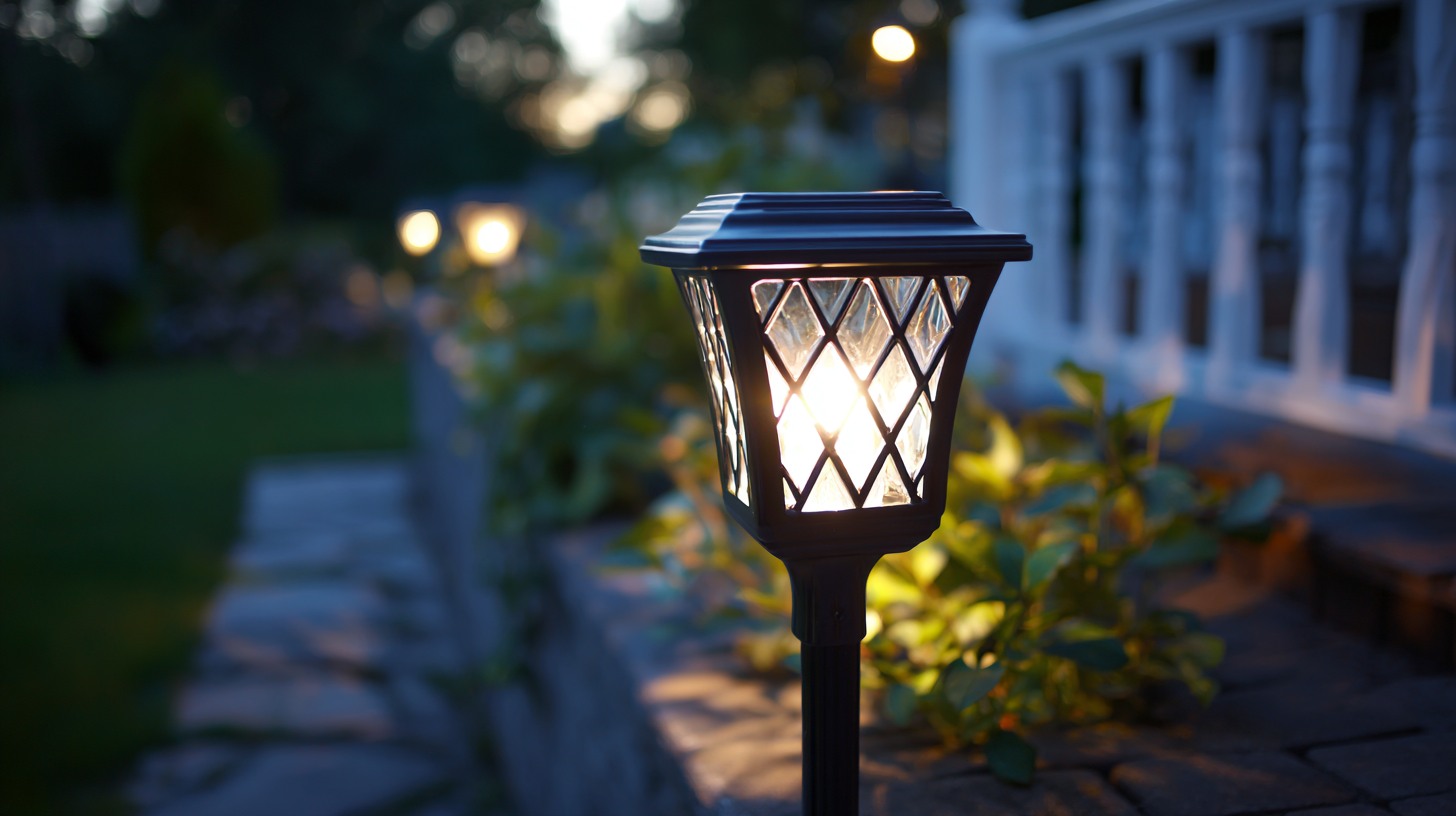
Different Types of Solar Lights and Their Uses
When selecting the best exterior solar lights for your home and garden, it's essential to understand the different types available and their specific uses.
Solar garden lights, for instance, are typically designed for illuminating pathways and creating ambient lighting in outdoor spaces. These lights often come in various designs, including stake lights that can be easily inserted into the ground, making them versatile for enhancing garden aesthetics.
Another popular category is solar flood lights, which offer higher brightness and are ideal for security purposes. These lights can illuminate large areas, making them suitable for driveways, backyards, and even commercial properties.
Furthermore, solar wall lights or lanterns are perfect for highlighting features of your home’s architecture or providing functional lighting near entrance points. By understanding these options, homeowners can make informed decisions to enhance their outdoor spaces while benefiting from the energy efficiency and sustainability that solar lights provide.
How to Evaluate Brightness and Light Color for Outdoor Spaces
When selecting exterior solar lights for your home and garden, evaluating brightness and light color is crucial for creating an inviting outdoor space. Brightness is typically measured in lumens, with higher lumen outputs providing more light. For general outdoor illumination, aim for solar lights with at least 100-200 lumens. However, if you want focused lighting for specific areas such as pathways or security, consider lights with upwards of 300 lumens. This ensures sufficient visibility while also enhancing safety and in your outdoor areas.
Light color is another essential aspect to consider, as it influences the mood and functionality of your space. The color temperature of solar lights is measured in Kelvins (K), with lower values representing warmer tones, and higher values depicting cooler tones. Warm white lights (around 2700K-3000K) create a cozy, inviting atmosphere, perfect for gardens and relaxation areas. In contrast, cooler white lights (4000K and above) can provide a more modern look and are often better for task-oriented spaces. By carefully assessing both brightness and light color, you can select solar lights that not only serve their purpose but also complement the overall design of your outdoor environment.
Key Features to Look for in Durable Solar Lighting Options
When selecting durable solar lighting options for your home and garden, it's essential to focus on key features that ensure longevity and performance. Firstly, consider the material of the solar lights. High-quality options are typically made from sturdy materials such as stainless steel, aluminum, or high-grade plastic, which can withstand various weather conditions and resist rusting or fading over time. Additionally, look for lights with a tempered glass cover, as this can enhance durability and protect the solar panel from debris and harsh elements.
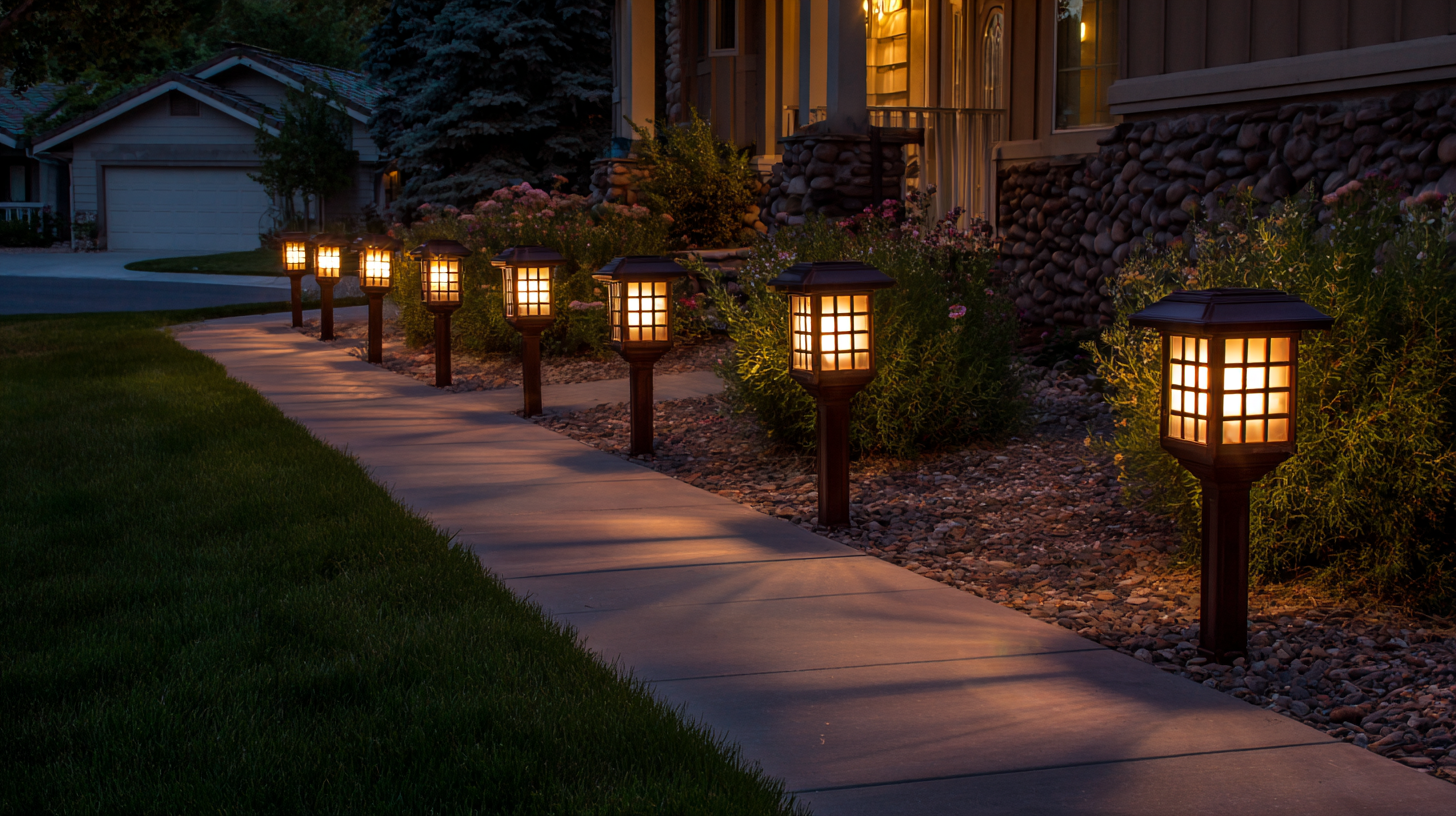
Another important feature to assess is the battery capacity and efficiency. Solar lights with lithium-ion batteries tend to offer better performance and longer life compared to cheaper alternatives. It's also advisable to choose lights with a larger solar panel surface area to maximize sunlight absorption, thereby improving charging efficiency. Lastly, pay attention to the brightness level, measured in lumens; opting for lights that provide adjustable brightness or motion sensors can enhance security while delivering the right amount of illumination for your outdoor space.
Maintenance Tips for Extending the Life of Your Solar Lights
Maintaining exterior solar lights is essential for ensuring their longevity and optimal functionality. According to a report by the Solar Energy Industries Association (SEIA), the average lifespan of quality solar lights can reach up to 25 years when properly maintained. Regular maintenance practices can significantly extend this lifespan, making it crucial for homeowners to adopt a few simple habits. Regularly cleaning the solar panels of dirt and debris enhances their efficiency, allowing them to harness maximum sunlight. A soft cloth and mild soap solution are usually all that’s needed to keep the panels in top shape.
In addition to cleaning, it's important to periodically check the battery performance. Most solar lights utilize rechargeable lithium-ion batteries, which can last anywhere from 2 to 5 years. The installation of lights in appropriate locations, away from heavy shade, can also improve their performance. According to a recent study, positioning solar lights in areas that receive at least 6 hours of sunlight daily can boost energy absorption significantly. By taking these maintenance steps, homeowners can not only enhance the brightness of their solar lights but also contribute to energy conservation and sustainability at home.
How to Choose the Best Exterior Solar Lights for Your Home and Garden - Maintenance Tips for Extending the Life of Your Solar Lights
| Type of Solar Light | Lumens Output | Battery Life (Hours) | Charging Time (Hours) | Maintenance Tips |
|---|---|---|---|---|
| Path Lights | 50-150 | 8-12 | 6-8 | Clean lenses regularly and check wiring. |
| Flood Lights | 200-400 | 10-15 | 8-10 | Adjust angles for sunlight exposure; replace batteries as needed. |
| String Lights | 20-100 | 6-10 | 4-6 | Ensure connections are waterproof; avoid clutter. |
| Wall Lights | 80-200 | 8-12 | 6-8 | Check for debris; ensure batteries are charged. |
| Deck Lights | 30-100 | 6-10 | 5-7 | Regularly clear dirt; check for corrosion. |
Related Posts
-
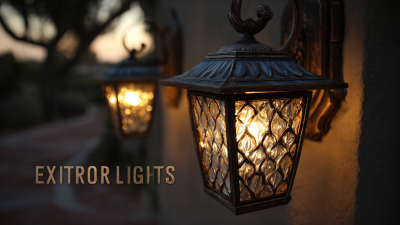
Understanding Industry Standards for Best Exterior Solar Lights
-
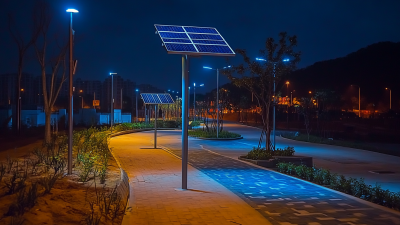
Top 10 Solar-Powered LED Light Manufacturers from China at the 137th Canton Fair
-
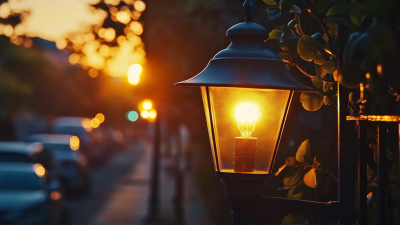
Setting New Industry Standards for the Best Solar Lamp Outdoor: A Global Perspective
-
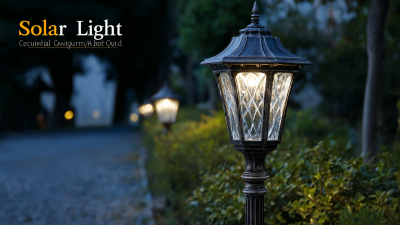
Top Quality Best Solar Light Outdoor Manufactured in Leading Chinese Factories
-
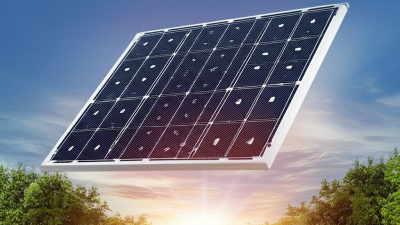
Unlock Global Savings: High-Quality LED Solar Lights from China's Leading Manufacturer
-

Unlocking the Power of Solar Lighting with Best Outdoor Solar Lights Technical Features and Setup Guide
USA / Americas
1507 Capital Ave, Suite 102
Plano, TX 75074
+1 (214) 838-7010
8:00am – 5:00pm (GMT-6)
Australia / Asia Pacific
503 Cross Keys Rd,
Cavan SA 5094
+61 8 7200 3909
9:00am – 5:00pm (ACDST)
© 2025 Green Frog Systems. | Privacy Policy | Terms & Conditions


